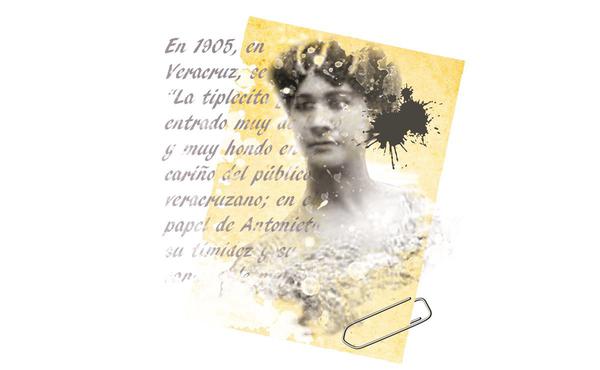17
02/2022
Among the remains that rest on the streets of Mexico City, in the current Republic of Brazil, is the structure of the María Guerrero theater, named after a Spanish actress. The public recomposed the name and baptized it "María Tepaches", given its racy repertoire and the large number of outlets, which were in the area, of that Mexican drink. The place was the cradle of actresses who, like their settings, are buried in the pages of history, as is the case of Emilia Trujillo, or Trujis, a diminutive with which she was advertised on billboards.
Theatrical historians have been unable to decipher either Emilia's origin or her ultimate fate. They are also not certain that that was her real name, despite the fact that she was one of the most popular artists at the end of Porfirism.
After certain investigations, I was able to find out that she was born around 1890. It is certain that she was from Guadalajara; Since she was very young she conquered the theaters of Guadalajara, where she attended with the surveillance of her mother, although, once she left the land, she was never heard from again. At the beginning of September 1904, already in the capital, she worked for the Lelo de Larrea brothers, owners of the famous María Tepaches, and she debuted with the zarzuela El rey que rabió.

Some friction with businessmen forced her to seek her fortune in the interior of the country. Her travels through different states encouraged her fame. In 1905, in Veracruz, she assured herself: “The tiplecita (…) has entered very fully and deeply into the affection of the Veracruz public; in the role of Antoinette, her shyness and her candor, of greater merit since artistically well feigned, reveal aptitudes of good stock for comic work”. In Zacatecas, gossip arose about her due to the rumor that one of her zarzuela companions had stolen a gold watch from her. The press immediately put its lens on the matter and, although everything resulted in a misunderstanding, the majority chose to defend Trujis.
In Guaymas, one of her most emotional episodes occurred due to her personification of the neighborhood woman. Behind the scenes was a six-year-old girl who, seeing Emilia on stage, began to imitate her gestures and tones. The director, noticing the girl's talent, suggested that, in the next presentation, the little girl had the opportunity to parody Trujis. The public applauded the minor more than Emilia herself, even asking for the act to be repeated without the actress. The little girl was none other than Amelia Wilhelmy, who took, from then on, Guadalajara as a standard until she consolidated her best-known character in the duo of "La Guayaba" and "La Tostada".
In 1909 she returned to the capital and Emilia found more empathy in the cast of María Guerrero, led by Leopoldo Beristáin, where she embodied what would later become the stereotype of a woman from the suburbs who loved drinks, who made drunkenness a joke. Her character not only served Wilhelmy, she also inspired Lupe Rivas Cacho, and generated a school within our comedy. The satire where the character of “la Borrachita” was born was Mexico Nuevo, released in June.
For critics, Emilia's voice was one of her most outstanding attributes and the young woman was characterized by her daring couplets. However, in addition to finding works in which she participated on the billboard, her name began to be the headline of charity functions, since a terrible shadow accompanied her success. Tuberculosis was beginning to affect her health.

- 1238
- what drink is good for women's health
Related Articles
How many sit-ups should I do a day to get rid of my belly?
30/01/2022Flattening the abdomen or reducing the fat in this area is a difficult task. But don't despair, we will solve the question: how many sit-ups should I do a day to eliminate the belly. Abdominal fat...
Jalisco The Ministry of Health invites men and women to learn about family planning services
04/02/2022The Jalisco Ministry of Health invites men and women of reproductive age to learn about and use the various services offered by the Family Planning and Contraception Program, which...
Telva International day against gender violence: screens multiply mistreatment against women
01/02/2022SaludUpdated Change of scenery, same victims. On the International Day for the Elimination of Violence against Women, we highlight how aggressions have been copied to the digital sphere, increasing...
Coronavirus Spain today | | Health The Trust Project
18/03/2022The Ministry of Health has reported 3,261 new coronavirus infections and 155 deaths, while the cumulative incidence drops more than six points in 24 hours to 109.3 cases. There is...